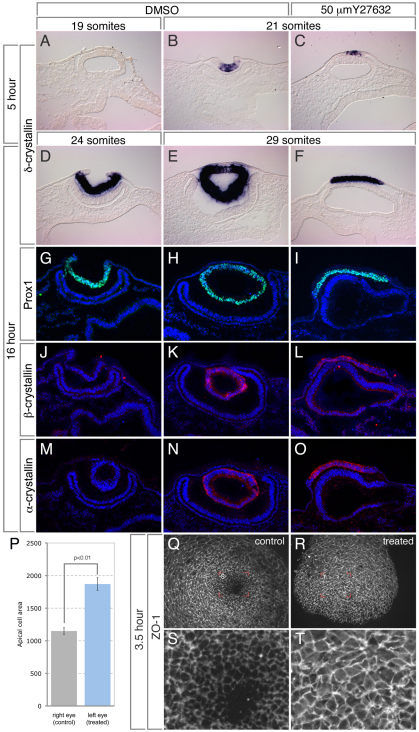Fig. 1.
Rock1/2 activity is required for lens pit invagination and apical constriction. (A-F) In situ hybridization of cryosectioned chicken embryos cultured in the presence of DMSO (A,B,D,E), or 50 mM Y27632 (C,F) for the indicated time, using a probe specific for δ-crystallin, an early lens differentiation marker. Embryos were age matched according to somite number. (G-O) Cryosections of chicken embryos cultured for 16 hours were immunofluorescently labeled (green or red) with the indicated lens differentiation markers. Hoechst staining was performed simultaneously to visualize the nuclei (blue). (P-T) A local dose of Y27632 was administered to the left eye of stage 13 chick embryos and cultured for 3.5 hours. The embryos were immunofluorescently labeled for ZO1 to mark the apical junctions of the right control eye (Q,S) or the Y27632-treated eye (R,T). The average apical area of cells from each eye was quantified and is depicted in the graph (P). Error bars represent s.e.

